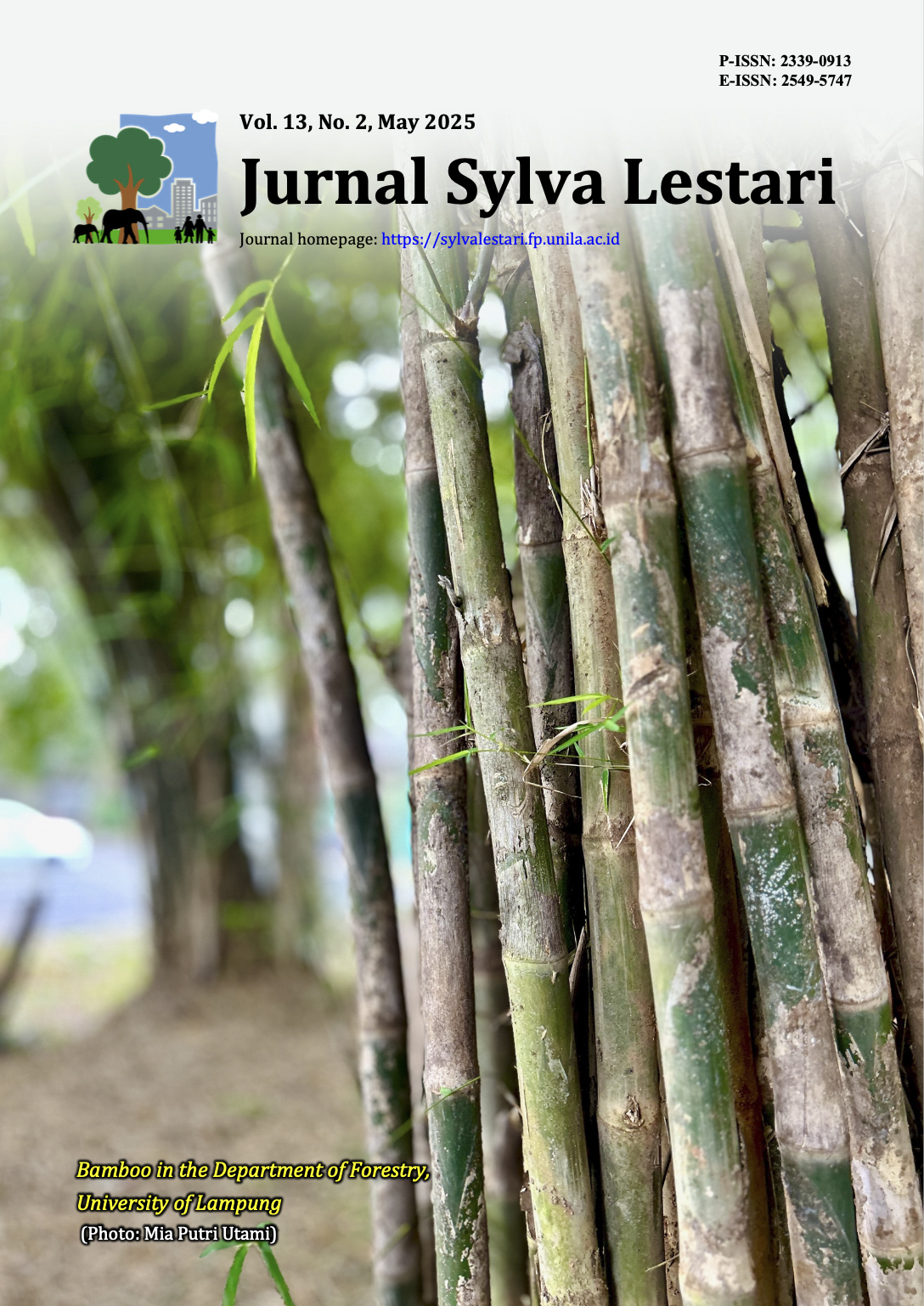Model Development of the Forest Quality Assessment using Second-Order Confirmatory Factor Analysis
DOI:
https://doi.org/10.23960/jsl.v13i2.1064Abstract
Forest quality plays a crucial role in sustaining the functions of forest ecosystems. This study aims to develop a valid and reliable model for assessing forest quality through six dimensions: forest productivity, forest structure, soil factors, climatic conditions, topography, and anthropogenic factors. Vegetation data were collected from 138 sample plots using a stratified purposive sampling method. Soil, topography, and climate data were obtained from the SoilGrids, DEMNAS, CHIRPS, and NASA POWER websites, respectively. Anthropogenic data were derived from Sentinel-2 imagery. The forest quality assessment model was developed using confirmatory factor analysis (CFA). Results showed that forest structure, forest productivity, soil, and anthropogenic factors are valid and reliable in assessing forest quality, with forest productivity as the primary determinant. However, topographic and climatic factors were not valid for assessing forest quality due to the low variation in topographic and climatic data within the study area. The goodness-of-fit model evaluation indicated a good fit based on criteria including the chi-square, RMSEA, GFI, SRMR, AGFI, TLI, CFI, NFI, and CMIN/DF. Based on the relative weights of each dimension and indicator and using linear additive equations, a mathematical equation for the forest quality index is derived, providing a practical framework for assessing forest quality at the landscape scale, particularly in heterogeneous tropical ecosystems.
Keywords: confirmatory factor analysis, forest quality assessment, Rawa Aopa Watumohai National Park, sustainable forest management
Downloads
Downloads
Published
How to Cite
Issue
Section
Statistics
 Abstract views: 297 times
Abstract views: 297 times PDF downloaded: 320 times
PDF downloaded: 320 times
Metrics
License
Copyright (c) 2025 Zulkarnain, Muhammad Buce Saleh, Budi Kuncahyo, Tatang Tiryana, Nining Puspaningsih

This work is licensed under a Creative Commons Attribution-NonCommercial 4.0 International License.
Authors retain copyright and grant the journal right of first publication with the work simultaneously licensed under a Creative Commons Attribution-NonCommercial 4.0 Licence that allows others to share the work with an acknowledgement of the work's authorship and initial publication in this journal.
Authors are able to enter into separate, additional contractual arrangements for the non-exclusive distribution of the journal's published version of the work (e.g., post it to an institutional repository or publish it in a book), with an acknowledgement of its initial publication in this journal.
Authors are permitted and encouraged to post their work online (e.g., in institutional repositories or on their website) prior to and during the submission process, as it can lead to productive exchanges, as well as earlier and greater citation of published work (See The Effect of Open Access).









